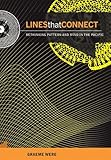Lines That Connect : Rethinking Pattern and Mind in the Pacific / Graeme Were.
Material type: TextPublisher: Honolulu : University of Hawaii Press, [2010]Copyright date: ©2010Description: 1 online resource (224 p.) : 44 illusContent type:
TextPublisher: Honolulu : University of Hawaii Press, [2010]Copyright date: ©2010Description: 1 online resource (224 p.) : 44 illusContent type: - 9780824833848
- 9780824860486
- NK1496P26 W47.2010
- online - DeGruyter
- Issued also in print.
| Item type | Current library | Call number | URL | Status | Notes | Barcode | |
|---|---|---|---|---|---|---|---|
 eBook
eBook
|
Biblioteca "Angelicum" Pont. Univ. S.Tommaso d'Aquino Nuvola online | online - DeGruyter (Browse shelf(Opens below)) | Online access | Not for loan (Accesso limitato) | Accesso per gli utenti autorizzati / Access for authorized users | (dgr)9780824860486 |
Frontmatter -- Contents -- Acknowledgments -- One. Loci: Lines That Connect -- Two. Congruence: Pattern as the Art of Connecting -- Three. Asymmetries: Pattern, Performance, and Mission Christianity -- Four. Symmetries: Pattern, Belief, and the Baha'i Faith -- Five. Repetition: The Logic of Pattern -- Six. Tangents: Pattern as the Fabric of Thought -- Seven. Trajectories: Pattern in Transition -- Eight. On the Mathematical Mind -- Notes -- References -- Index
restricted access online access with authorization star
http://purl.org/coar/access_right/c_16ec
Building on historical and contemporary literature in anthropology and art theory, Lines That Connect treats pattern as a material form of thought that provokes connections between disparate things through processes of resemblance, memory, and transformation. Pattern is constantly in a state of motion as it traverses spatial and temporal divides and acts as an endless source for innovation through its inherent transformability. Graeme Were argues that it is the ideas carried by pattern's relational capacity that allows Pacific islanders to express their links to land, genealogy, and resources in the most economic ways. In doing so, his book is a timely and unique contribution to the analysis of pattern and decorative art in the Pacific amid growing debates in anthropology and art history.This striking and original study brings together objects and photographs, historical literature and contemporary ethnographic case studies to explore pattern in its logical workings. It presents the first-ever analysis of the well-known patterned shell valuable called kapkap as revealed in New Ireland mortuary feasts. Innovative research in the study of Christianity and the Baha'i faithful in the region shows how pattern has been appropriated in new religious communities. Were argues that pattern is used in various guises in performances, church architecture, and funerary images to contrasting effect. He explores the conditions under which pattern facilitates a connecting of old and new ideas and how missionary processes are implicated in this flow. He then considers the mechanisms under which pattern is internalized, paying particular attention to its embeddedness in spatial and numerical thinking. Finally, he examines how pattern carries new materials and technologies, which in turn provide new resources for sustaining old beliefs. Drawing on a multitude of fields (anthropology; art history; Pacific, museum, and religious studies; education; ethnomathematics), Lines That Connect raises key questions about the capacity of pattern across the Pacific to bind and sustain ideas about place, body, and genealogy in the most logical of ways.
Issued also in print.
Mode of access: Internet via World Wide Web.
In English.
Description based on online resource; title from PDF title page (publisher's Web site, viewed 02. Mrz 2022)


